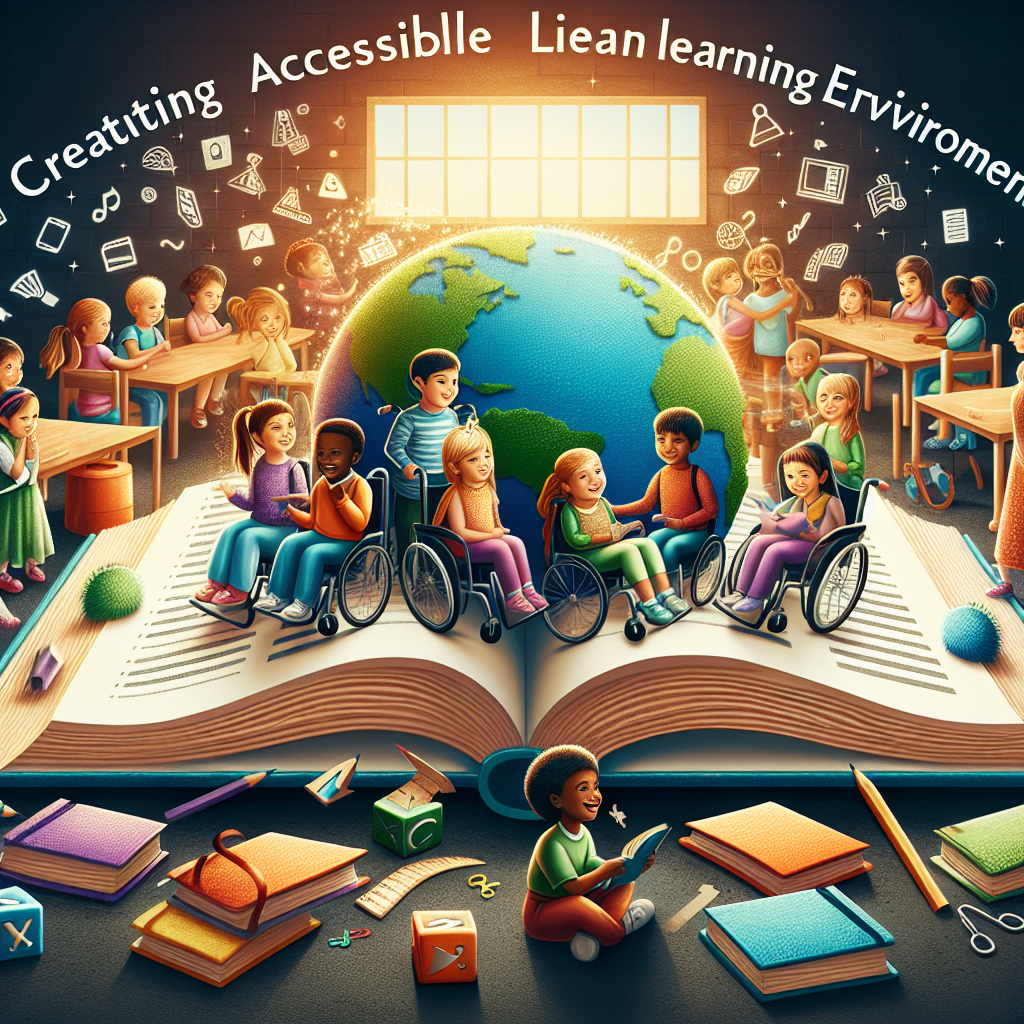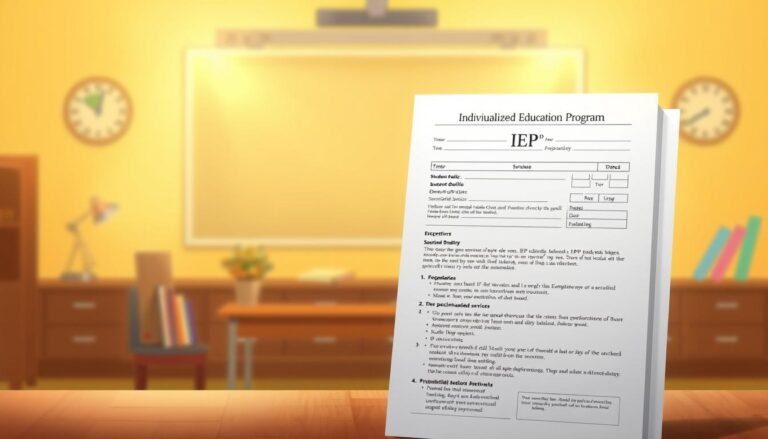
Creating Accessible Learning Environments: Essential Lesson Plans for Children with Learning Disabilities
Introduction
In today’s increasingly diverse classrooms, the challenge of accommodating students with learning disabilities has never been more pressing. As educators, our goal should not just be to teach, but to create accessible learning environments that empower every student to thrive. Creating Accessible Learning Environments: Essential Lesson Plans for Children with Learning Disabilities provides a roadmap for educators seeking to build inclusive classrooms filled with compassionate understanding and innovative strategies.
Think about it: approximately 1 in 5 children in school has a learning disability, making it essential to address their unique needs head-on. Failure to do so not only hinders potential but can also lead to frustration and disengagement. As we delve into key concepts and practical applications, you’ll discover how you can transform your teaching approach to support all learners effectively.
Understanding Learning Disabilities
What Are Learning Disabilities?
Learning disabilities are neurological disorders that affect the way individuals acquire, process, or retain information. These disabilities can manifest as difficulties in reading, writing, math, or coordination, impacting students’ performance and self-esteem.
Common Types of Learning Disabilities:
- Dyslexia – Difficulty in reading and interpreting letters.
- Dyscalculia – Challenges in understanding numbers and mathematical operations.
- Dysgraphia – Issues with writing, including poor handwriting and trouble forming coherent sentences.
- ADHD (Attention Deficit Hyperactivity Disorder) – Difficulty in maintaining attention, organization, and impulse control.
Importance of Creating Accessible Learning Environments
The need for accessible learning environments is rooted in the belief that every child deserves an equitable education. According to the National Center for Learning Disabilities, effective intervention can lead to significant academic gains. Accessibility is not merely about tools or technology; it encompasses a mindset of inclusivity and understanding.
Essential Components of Accessible Learning Environments
1. Differentiated Instruction
What It Is: Differentiated instruction emphasizes tailoring teaching methods to accommodate diverse learning styles.
Strategies:
- Use multiple modes of representation and expression.
- Offer choices in assignments (e.g., projects, presentations).
- Regularly assess student understanding and adapt accordingly.
Case Study: Miss Kelly’s Classroom
Miss Kelly teaches a third-grade class with a mix of learners, including several with diagnosed learning disabilities. She uses flexible grouping strategies, enabling students to work in pairs or small groups based on reading levels. By offering tiered assignments—ranging from simple summarization to elaborated projects—she ensures that all students feel challenged yet capable.
Relevance: This case exemplifies how differentiated instruction makes learning accessible, reinforcing that teaching should cater to each student’s strengths and challenges.
2. Visual and Auditory Supports
What They Are: Visual and auditory aids can significantly enhance comprehension for students with learning disabilities.
Strategies:
- Use charts, maps, and graphic organizers to simplify complex information.
- Incorporate audio books and educational videos.
Table 1: Examples of Visual and Auditory Supports
| Support Type | Example | Learning Disability Benefits |
|---|---|---|
| Visual Aids | Graphic organizers | Helps dyslexic students break down information |
| Audio Supports | Podcasts and audiobooks | Aids students with ADHD focus on topics |
| Interactive Tools | Smartboards and tablets | Engages all types of learners |
3. Flexible Assessments
What It Is: Assessments need to reflect students’ learning accurately without the undue stress of rigid testing formats.
Strategies:
- Allow oral presentations as alternatives to written reports.
- Use project-based assessments that highlight learning achievements.
Case Study: Mr. Adams’ Math Class
Mr. Adams noticed that traditional tests didn’t reflect his students’ understanding of mathematical concepts. He introduced performance tasks where students demonstrated knowledge through real-world applications, such as budgeting for a school event. This shift resulted in higher engagement and better outcomes.
Relevance: This case highlights the need for flexible assessment options that cater to varied skills, underscoring the essence of Creating Accessible Learning Environments: Essential Lesson Plans for Children with Learning Disabilities.
4. Classroom Environment
What It Is: The physical environment plays a critical role in how students learn.
Strategies:
- Arrange seating to minimize distractions.
- Create designated quiet areas for students who need a break.
Chart 1: Elements of an Accessible Classroom Environment
| Element | Importance |
|---|---|
| Seating Arrangement | Minimizes distractions |
| Color-Coded Materials | Aids in organization |
| Quiet Zones | Provides a retreat for overwhelmed students |
Implementing Essential Lesson Plans
Planning Lessons with Diversity in Mind
Lesson plans must not only cover content but also account for the diverse needs of learners. Here’s how to do it effectively.
1. Establish Clear Objectives
Objectives should be clearly defined and measurable, ensuring they accommodate varying proficiency levels.
2. Integrate Technology
Utilize assistive technologies, such as text-to-speech applications, to enable independent learning for students with reading disabilities.
3. Foster Collaboration
Encourage students to work in diverse groups, fostering peer-to-peer learning. This can build empathy and understanding.
Example Lesson Plan: Understanding Place Value
Grade Level: 2nd Grade
Learning Objective: Students will understand the concept of place value using manipulatives and visual aids.
Introduction (15 minutes)
- Begin with a story that illustrates place value.
- Use a place value chart on a smartboard.
Guided Practice (20 minutes)
- Group students with manipulatives to explore thousands, hundreds, tens, and units.
Independent Practice (25 minutes)
- Provide a choice between completing a worksheet or creating a poster showplace value in real life.
- Assessment (10 minutes)
- Allow students to demonstrate understanding through oral presentations.
Feedback Loop
Regular feedback is vital. Encourage students to share what strategies worked for them and where they struggled. This iterative process cultivates a nurturing learning environment.
Inspiring Change: Beyond the Classroom
Creating inclusive educational environments requires community-wide collaboration. Parents, educators, and stakeholders must work together to advocate for policies and practices that champion accessibility.
Professional Development for Educators
Ongoing training can empower teachers with the tools and techniques necessary to address diverse learners effectively. Workshops focused on differentiated instruction, behavioral strategies, and using assistive technology can enhance teaching capabilities.
Building Awareness
Schools should engage families in discussions about learning disabilities, fostering a collective understanding and support network. Hosting informational sessions and providing resources can demystify learning disabilities, evoking empathy and collaboration.
Conclusion
The journey towards creating accessible learning environments is both challenging and rewarding. By implementing the strategies outlined in this article, educators can take crucial steps toward building inclusive classrooms that celebrate diversity and support every learner’s unique capabilities.
Remember, the goal of Creating Accessible Learning Environments: Essential Lesson Plans for Children with Learning Disabilities is not just to accommodate, but to empower. Let’s continue to advocate for our students, ensuring that they thrive academically, socially, and emotionally.
FAQs
1. What are the key components of an accessible learning environment?
The key components include differentiated instruction, visual and auditory supports, flexible assessments, and an inclusive classroom environment.
2. How can I identify the specific needs of students with learning disabilities?
Conduct regular assessments, engage in open conversations, and collaborate with specialists to understand each student’s unique challenges.
3. What role does technology play in creating accessible learning environments?
Technology can provide tools for individualized learning, such as text-to-speech applications, educational games, and organizational software.
4. How can I engage parents in supporting my students with learning disabilities?
Offer workshops and resources that inform parents about learning disabilities, as well as collaborative ways they can assist at home.
5. Are there resources available for teachers to learn more about differentiated instruction?
Yes, numerous professional organizations and online platforms offer training and literature on differentiated instruction and inclusive practices.
6. What can I do if a student is not responding to my teaching methods?
Consider reevaluating your strategies, seeking input from special educators, and encourage open dialogue with the student about their preferred learning methods.
Creating an inclusive, engaging, and supportive learning environment isn’t just a goal—it’s a commitment to every child’s potential. Together, let’s make a lasting impact.
















